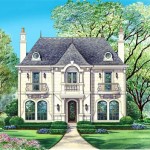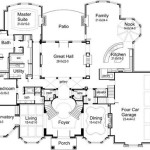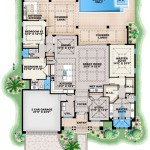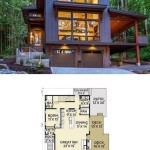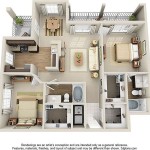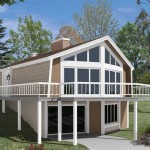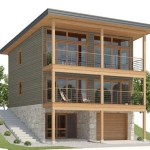Vintage House Plans: An Exploration Of Timeless Designs
Vintage house plans represent a rich tapestry of architectural styles and construction techniques spanning several decades. These designs offer a compelling glimpse into the past, reflecting the aesthetic preferences, technological advancements, and socio-economic conditions of their respective eras. Studying and appreciating vintage house plans allows one to understand the evolution of residential architecture and potentially incorporate elements of these timeless designs into modern homes.
The term "vintage" often encompasses a wide range of periods, typically ranging from the late 19th century to the mid-20th century. Within this timeframe, distinct architectural movements emerged, each leaving its indelible mark on residential design. Understanding these movements is crucial for interpreting and appreciating the nuances found in vintage house plans. These plans offer benefits that can be very appealing to modern design.
Architectural Movements Embodied in Vintage House Plans
Many architectural movements are represented within vintage house plans, impacting floor plans, exterior features, and interior details. Prominent among these movements are the Victorian, Arts and Crafts, and Mid-Century Modern styles. Each style emerged as a reaction to prevailing architectural trends and embraced specific design principles, resulting in unique and recognizable characteristics.
Victorian architecture, prevalent from the mid-19th century to the early 20th century, is characterized by its elaborate ornamentation, asymmetrical facades, and steeply pitched roofs. Vintage Victorian house plans feature intricate detailing such as decorative trim, bay windows, turrets, and gingerbread trim. Floor plans often emphasize formal living spaces and intricate layouts with multiple rooms. These homes typically showcase elaborate entryways that command attention and leave a lasting impression. The emphasis on craftsmanship and detailed ornamentation makes Victorian designs highly desirable and distinctive.
The Arts and Crafts movement, which gained popularity in the late 19th and early 20th centuries, advocated for simplicity, craftsmanship, and the use of natural materials. Vintage Arts and Crafts house plans typically feature low-pitched roofs, wide eaves, exposed rafters, and prominent porches. Interior spaces are characterized by open floor plans, built-in cabinetry, and natural wood finishes. This style rejected mass production and celebrated handcrafted elements, reflecting a commitment to quality and functionality. The integration of nature and handcrafted details is a defining characteristic of the Arts and Crafts movement.
Mid-Century Modern architecture, which flourished from the mid-1940s to the late 1960s, emphasized clean lines, expansive windows, and a connection to the outdoors. Vintage Mid-Century Modern house plans feature open floor plans, flat or low-pitched roofs, and the use of materials such as wood, glass, and steel. This style prioritized functionality and simplicity, reflecting a post-war optimism and a desire for modern living. Emphasis on natural light and indoor-outdoor living are core tenets of Mid-Century Modern design.
Key Features and Considerations When Utilizing Vintage Plans
Vintage house plans can provide valuable insights for those interested in building a new home or renovating an existing one. However, it is important to consider certain key points when working with these plans to ensure that the design aligns with current building codes, lifestyle preferences, and energy efficiency standards.
One critical consideration is the structural integrity of the original design. Building codes have evolved significantly over time, reflecting advancements in engineering and construction practices. It is essential to have a qualified architect or structural engineer review the vintage plans to ensure that the design meets current safety standards. This may involve reinforcing structural elements, updating foundation systems, or incorporating modern materials to improve the building's overall stability. The review process should also take into account local climate conditions and potential natural hazards, such as earthquakes or hurricanes.
Another important consideration is adapting the floor plan to contemporary lifestyles. Vintage house plans often reflect different living patterns and family dynamics than those prevalent today. For example, kitchens were traditionally smaller and more utilitarian, while living areas were more formal and compartmentalized. Modern families typically prefer open concept living spaces, larger kitchens with island counters, and flexible areas that can accommodate various activities. Modifying the floor plan to accommodate these preferences may involve removing walls, reconfiguring rooms, or adding new spaces to the existing design.
Energy efficiency is another crucial factor to consider when working with vintage house plans. Older homes often lack adequate insulation, efficient windows, and modern heating and cooling systems. Upgrading these features can significantly reduce energy consumption and improve the home's overall comfort. This may involve installing insulation in walls and attics, replacing single-pane windows with double-pane or triple-pane windows, and upgrading the HVAC system to a more energy-efficient model. Incorporating sustainable design principles, such as passive solar heating and cooling, can further enhance the home's energy performance.
The Enduring Appeal of Vintage Design
Vintage house plans continue to captivate homeowners and architects seeking unique and character-rich designs. Their enduring appeal stems from a combination of factors, including their historical significance, architectural beauty, and potential for customization.
These plans offer a tangible connection to the past, allowing homeowners to live in a space that reflects the craftsmanship and aesthetic sensibilities of a bygone era. Building or restoring a vintage home can be a way of preserving architectural history and celebrating the legacy of previous generations. The intricate details, unique features, and handcrafted elements found in many vintage homes create a sense of character and charm that is often lacking in modern construction.
Vintage house plans also provide a solid foundation for customization and personalization. While the original designs may need to be adapted to meet modern needs and preferences, they offer a starting point for creating a truly unique and individual home. Homeowners can incorporate their own personal style and taste while preserving the essential character of the original design. This allows for a harmonious blend of old and new, resulting in a home that is both timeless and functional.
The use of high-quality materials and construction techniques is another factor contributing to the enduring appeal of vintage house plans. Many older homes were built to last, using durable materials and time-tested construction methods. Restoring or renovating a vintage home often involves preserving these original materials and techniques, which can result in a higher quality and more durable structure than some modern construction. Furthermore, the use of natural materials, such as wood and stone, adds warmth and character to the home, creating a welcoming and inviting atmosphere.
Vintage house plans offer a treasure trove of inspiration and design ideas for those seeking to create a unique and timeless home. By understanding the architectural movements embodied in these plans, considering the key features and challenges associated with their implementation, and appreciating their enduring appeal, homeowners and architects can successfully integrate elements of vintage design into modern living spaces. This integration allows for a harmonious blend of history, functionality, and personal style, resulting in homes that are both beautiful and enduring.

Vintage House Plans 2182

Vintage House Plans Luxurious One Story Homes

Vintage House Plans 2130

1924 Print Home Design Living Room Dining Sun Architect Original Histo

Exploring Vintage Charm A Double Storied Villa With Timeless Elegance Kerala Home Design And Floor Plans 9k Dream Houses

Exploring Vintage Charm A Double Storied Villa With Timeless Elegance Kerala Home Design And Floor Plans 9k Dream Houses
European Elegance Old World House Plans We Love Blog Eplans Com

Pin Page

Two Story Homes Vintage House Plans Book Colonial Tudor French Spanish Georgian Farmhouse Contemporary Designs 1986

European Elegance Old World House Plans We Love Blog Eplans Com
Related Posts

